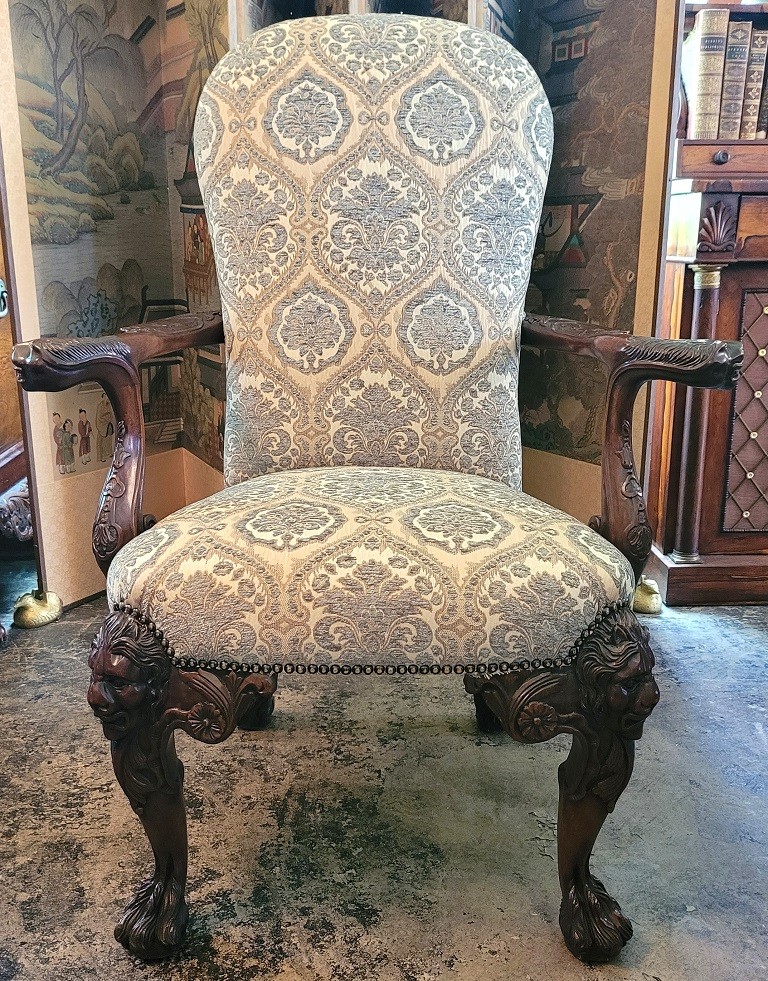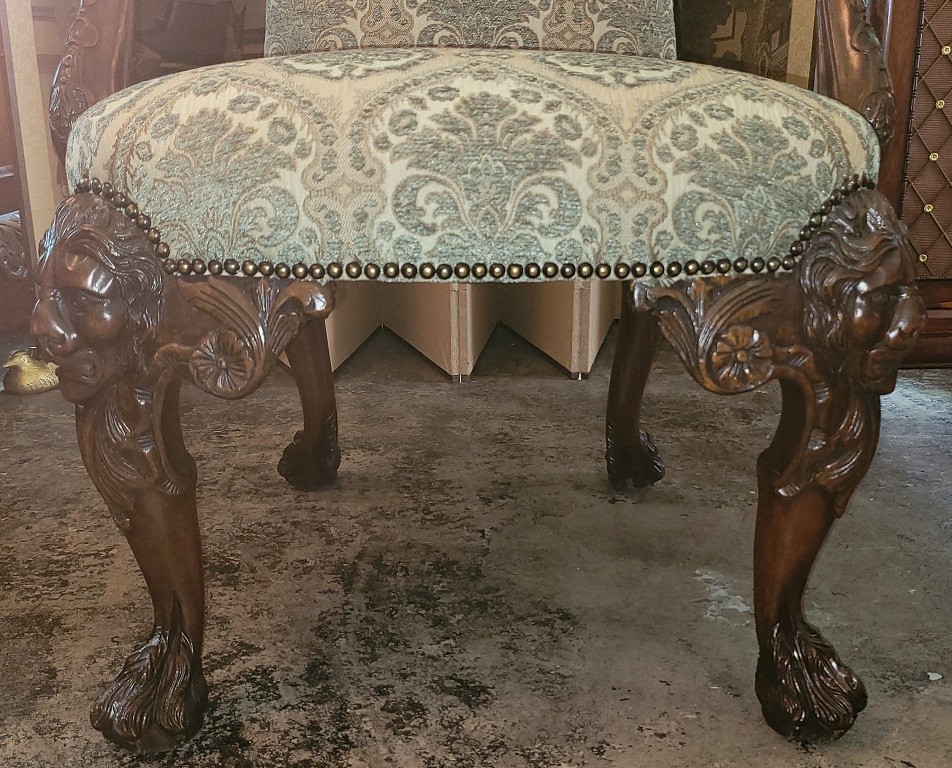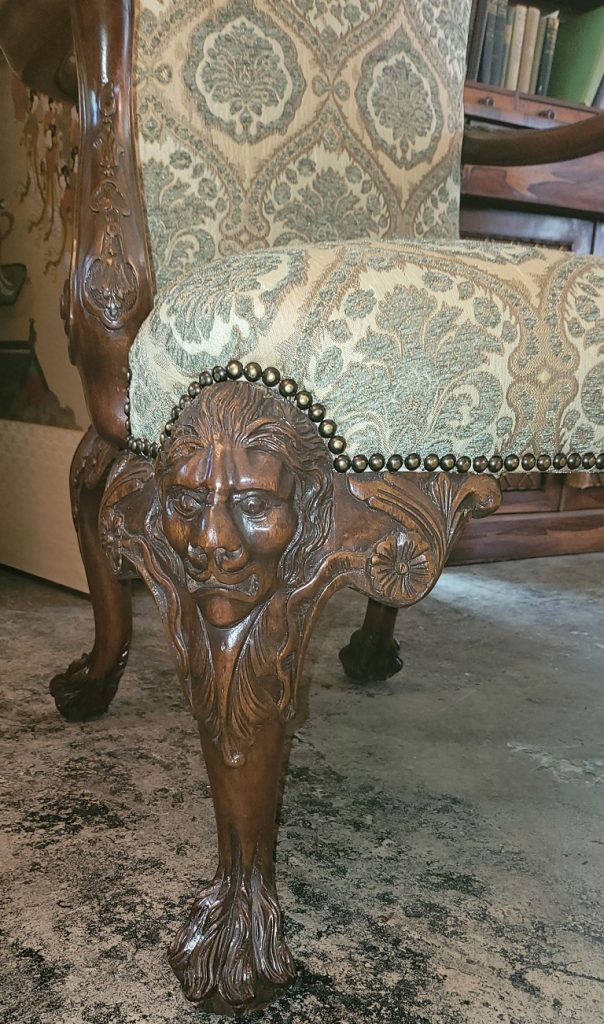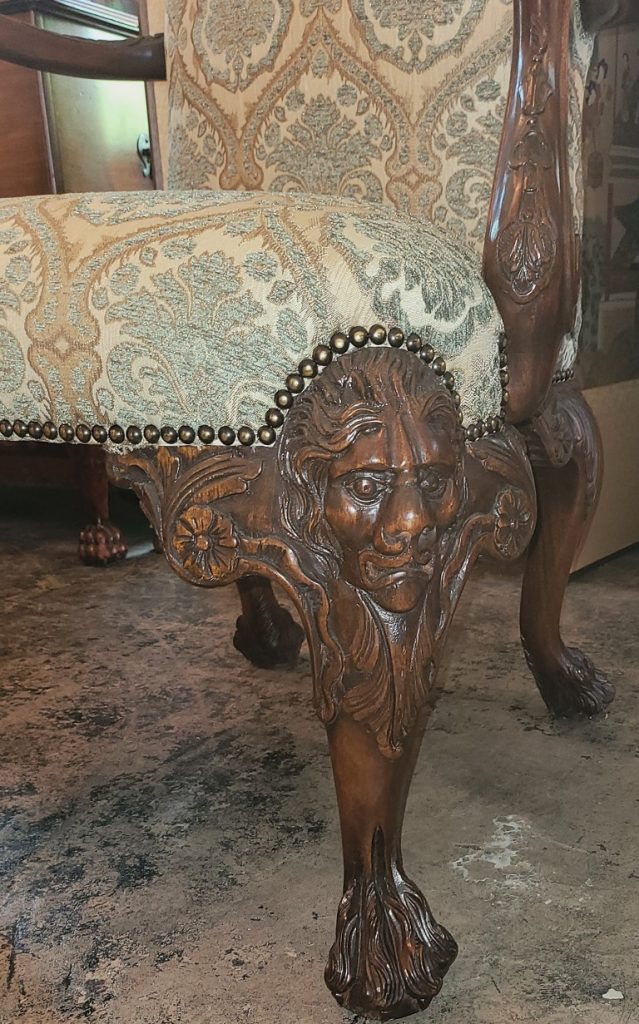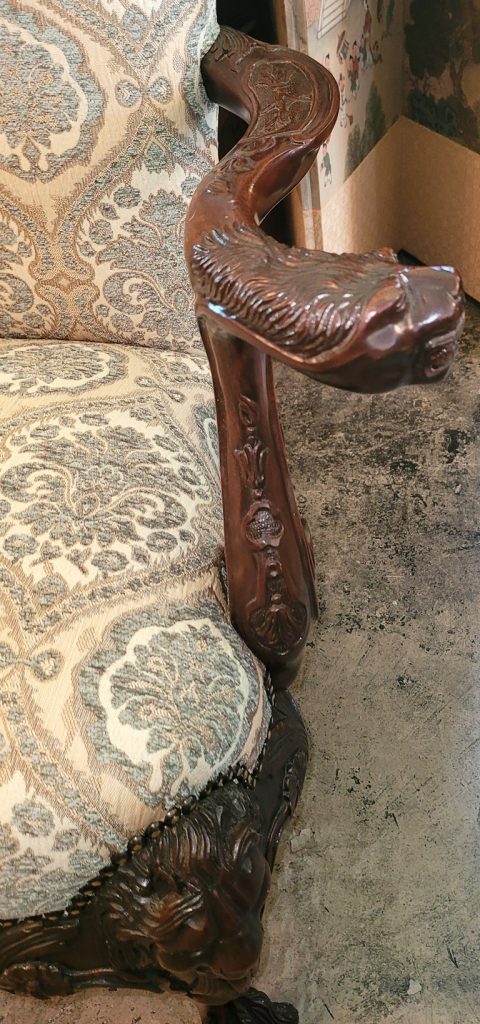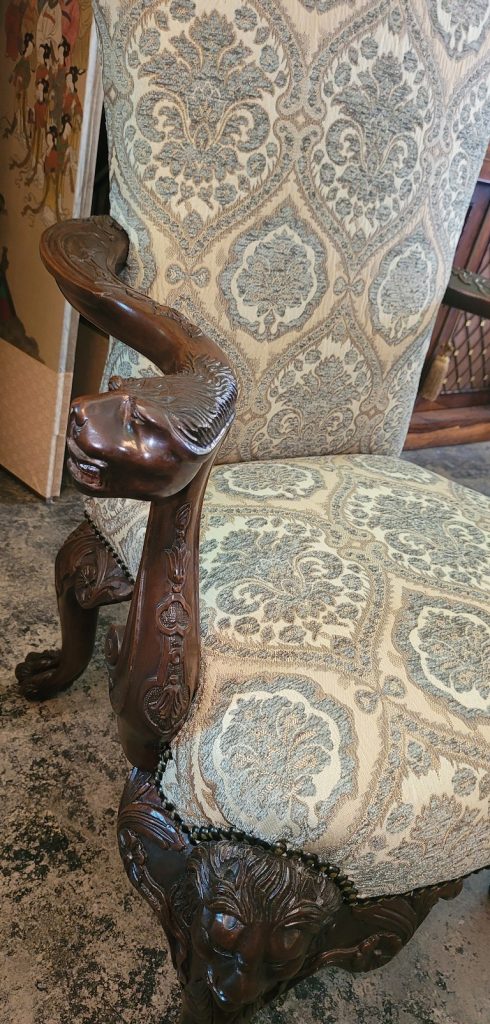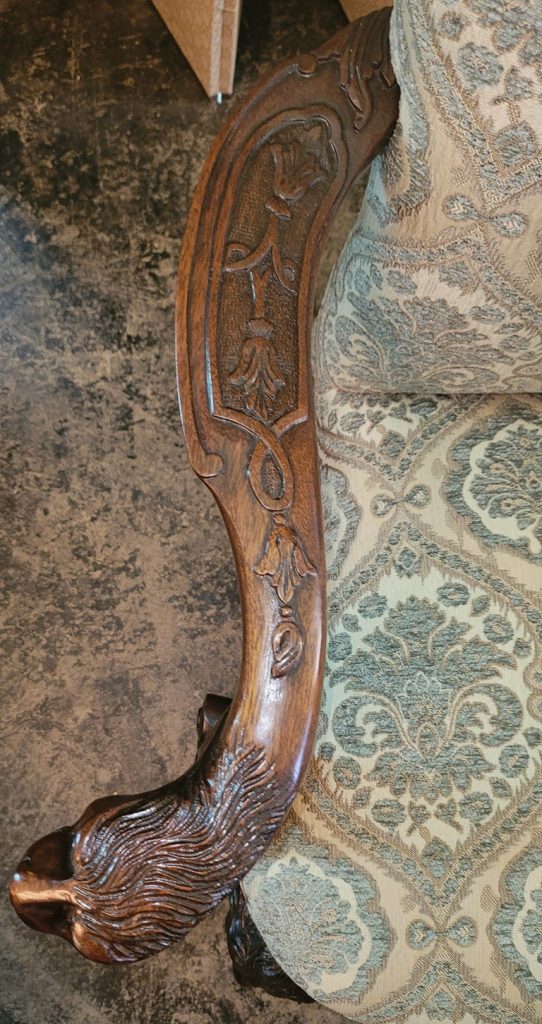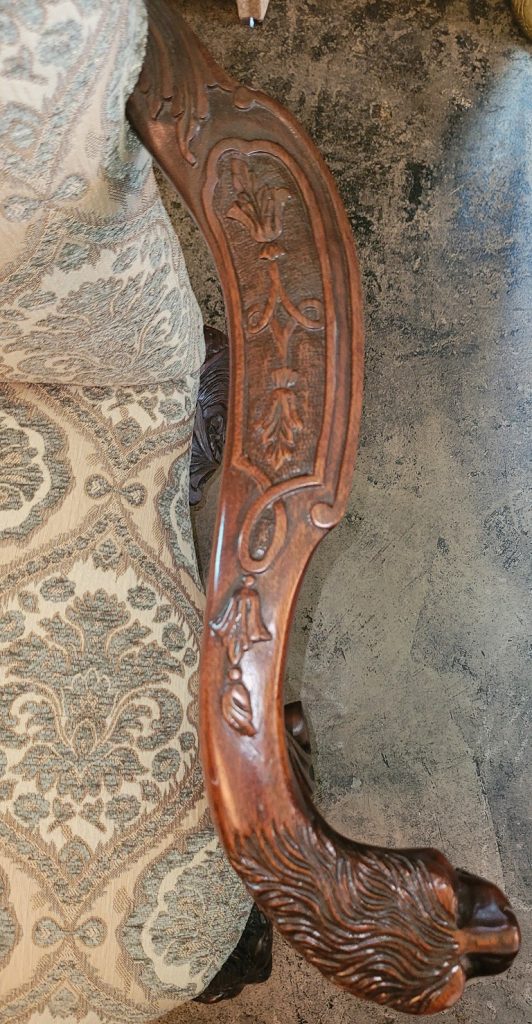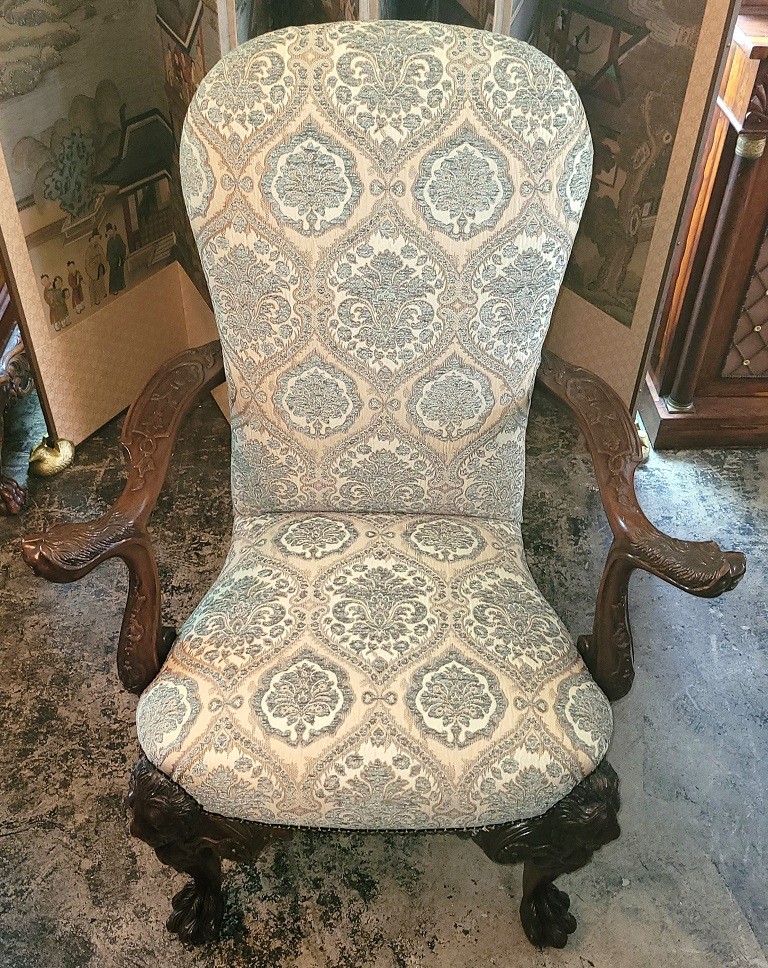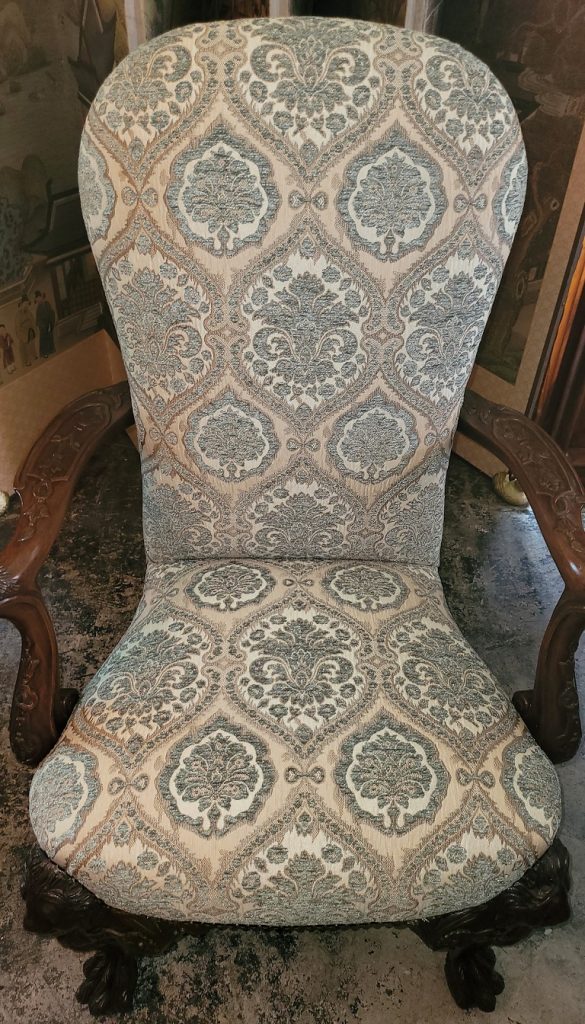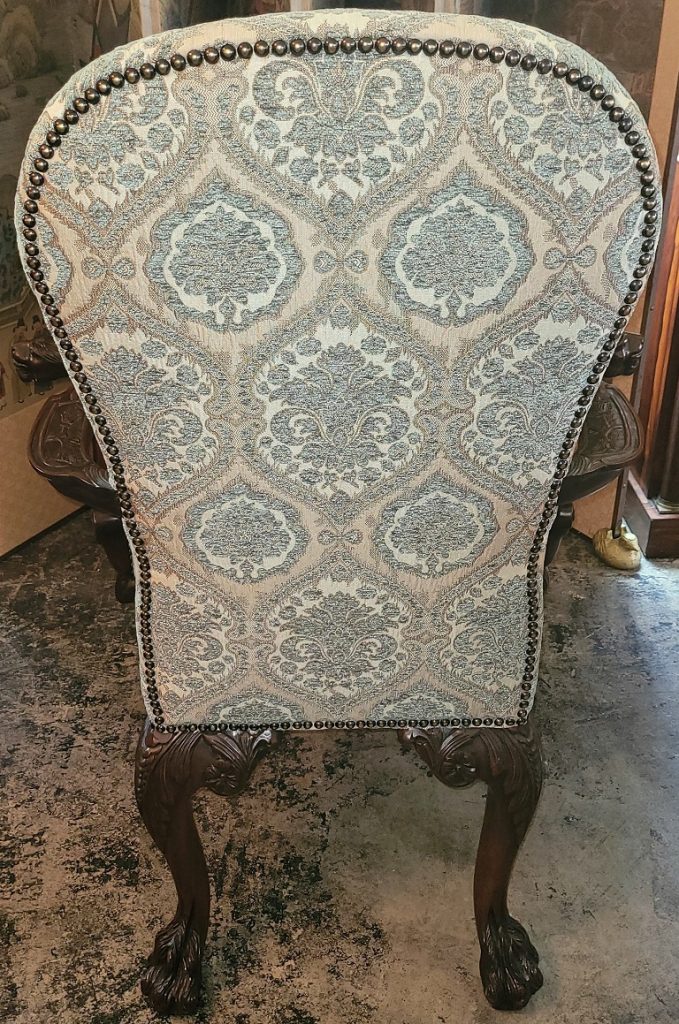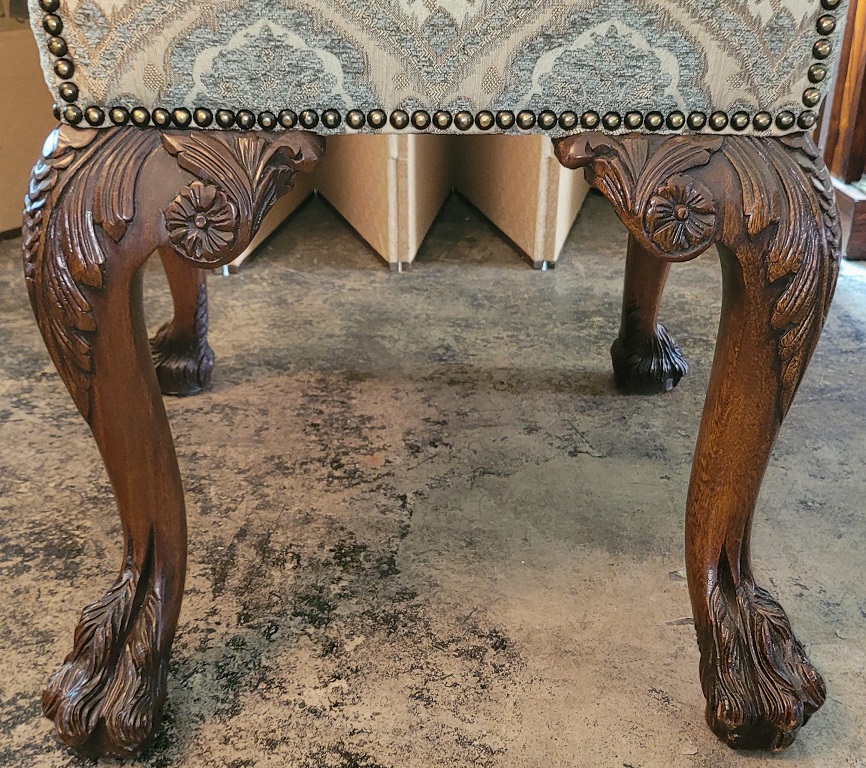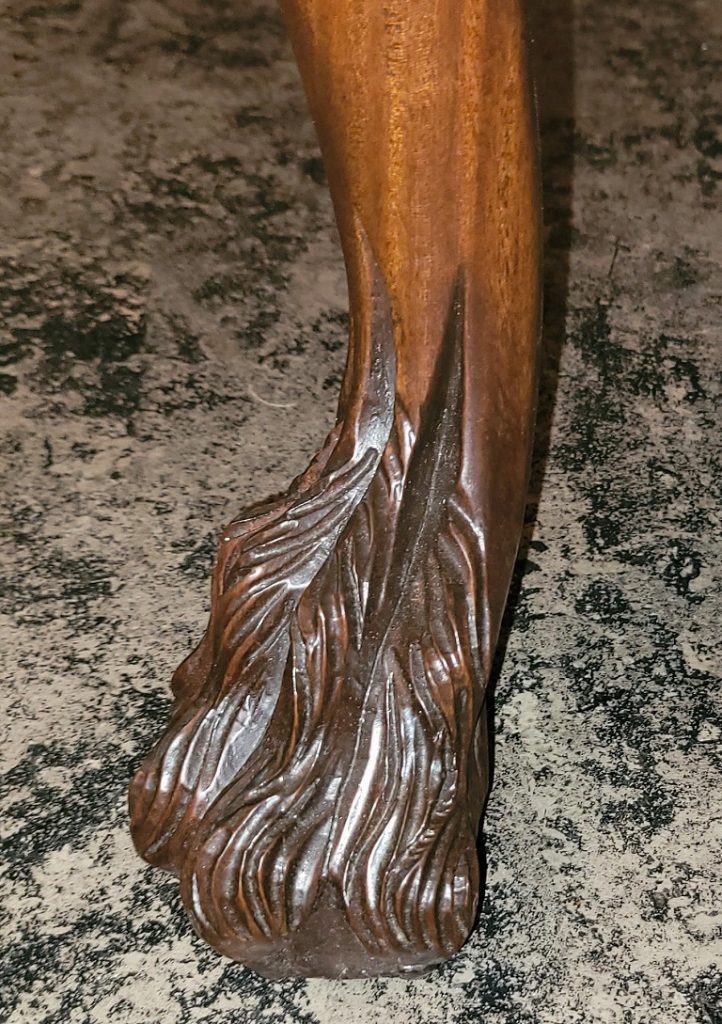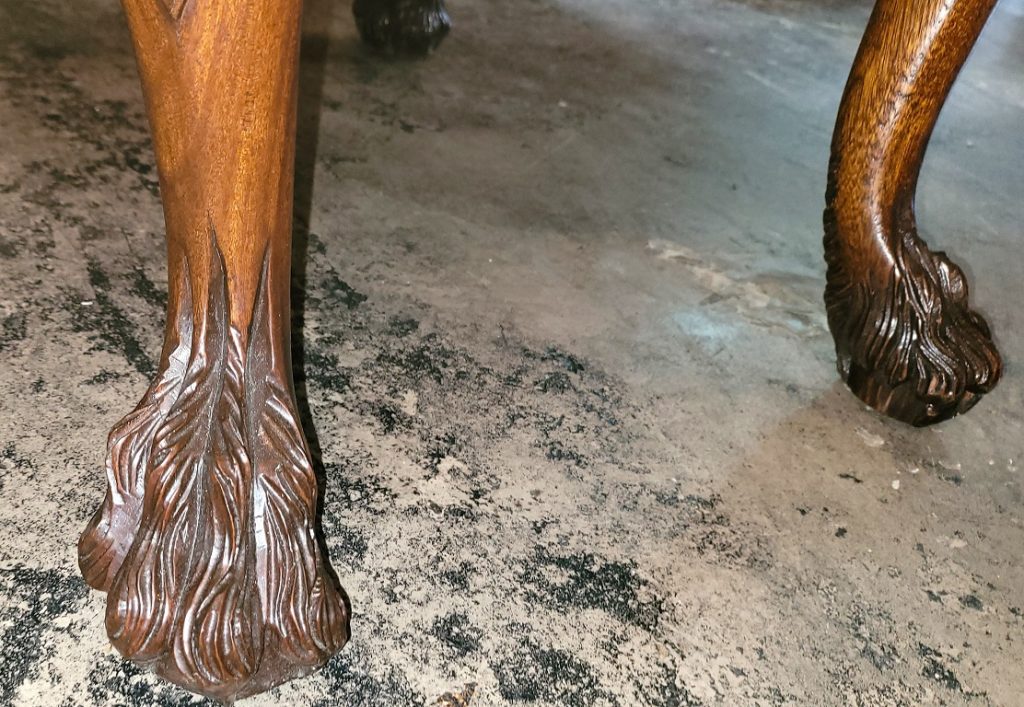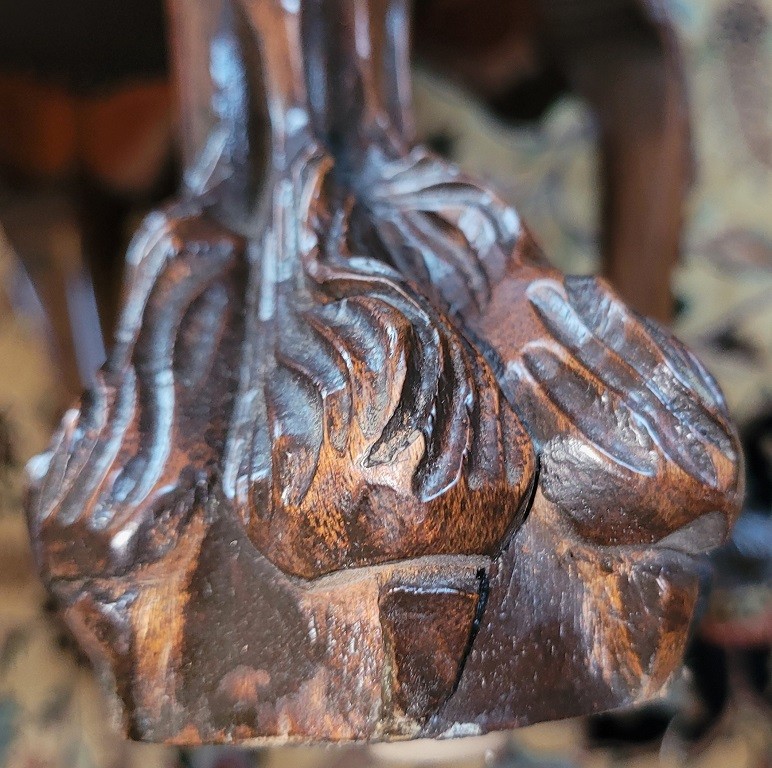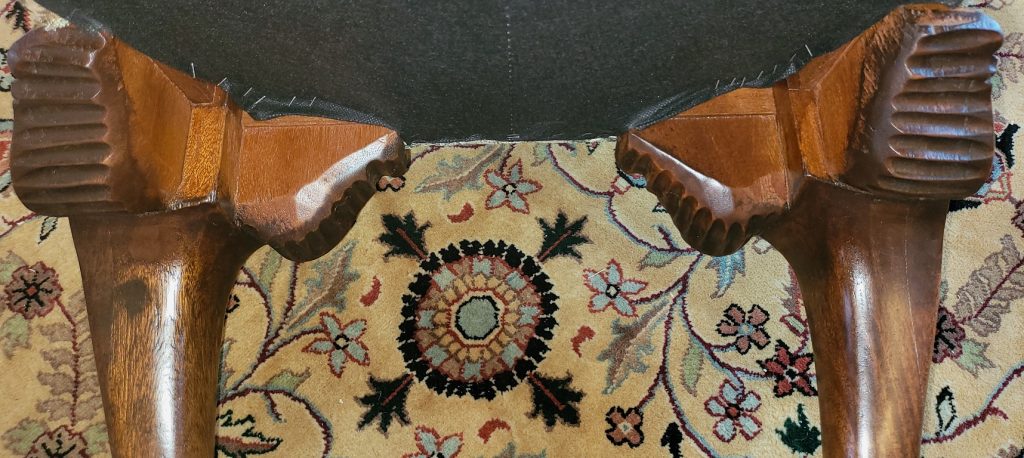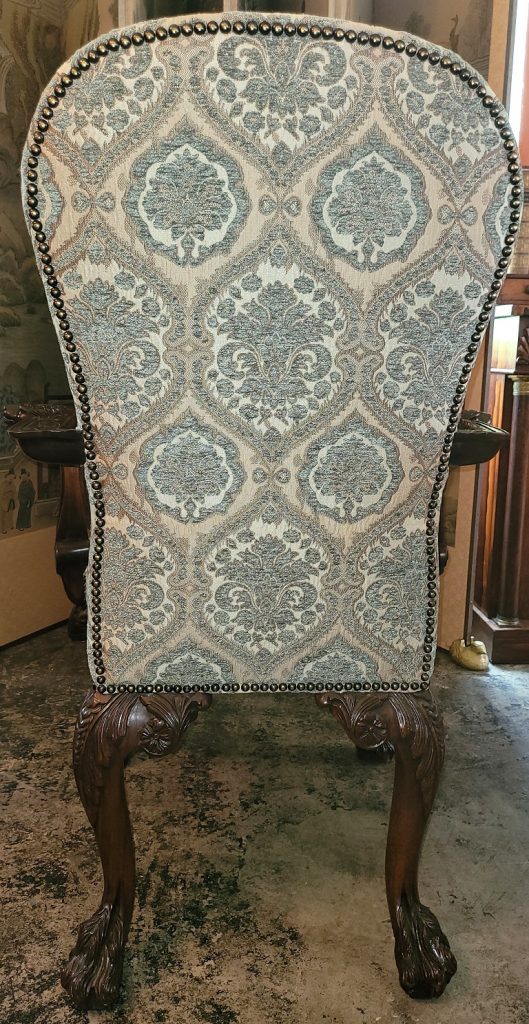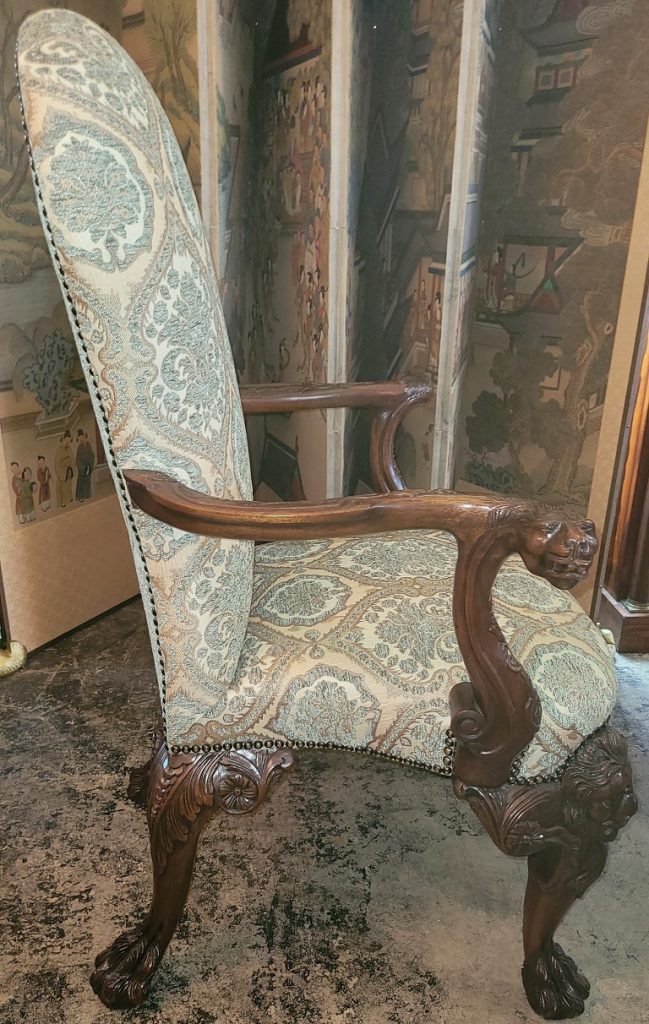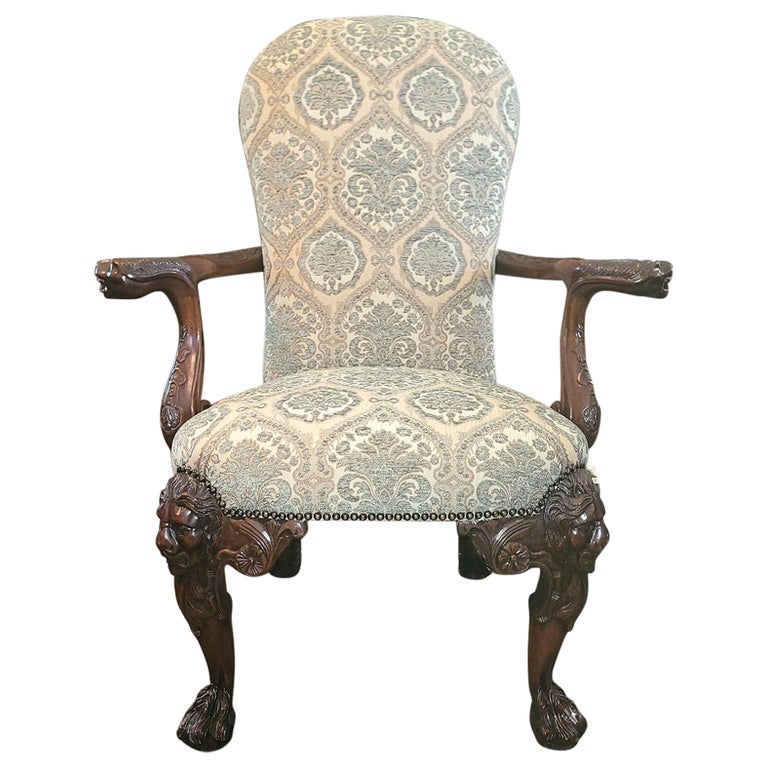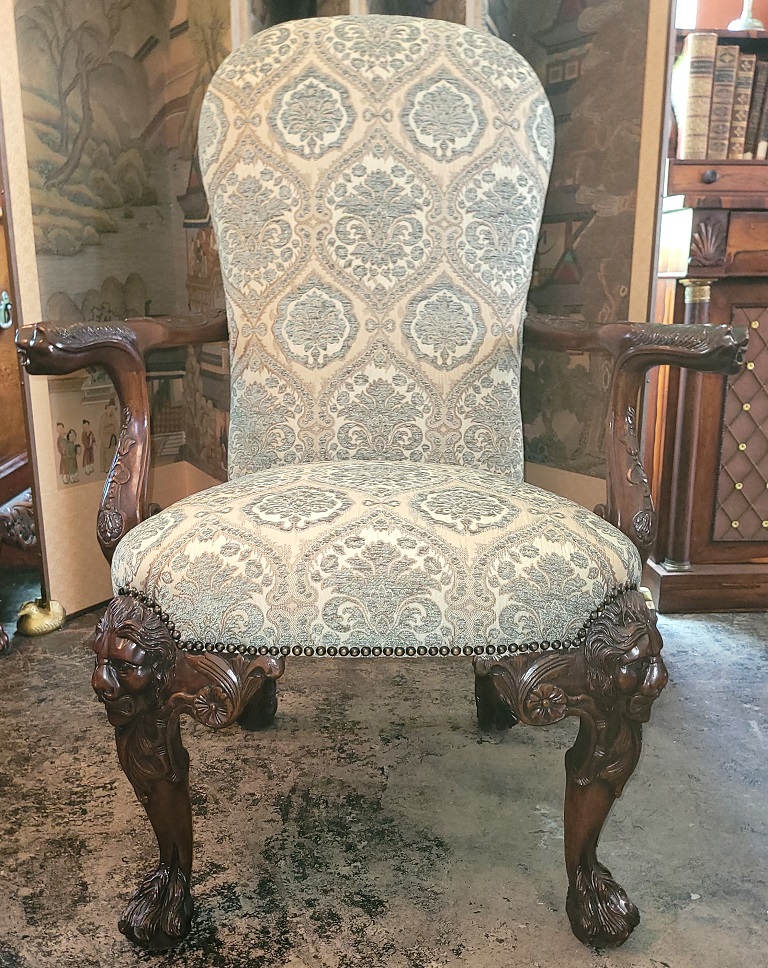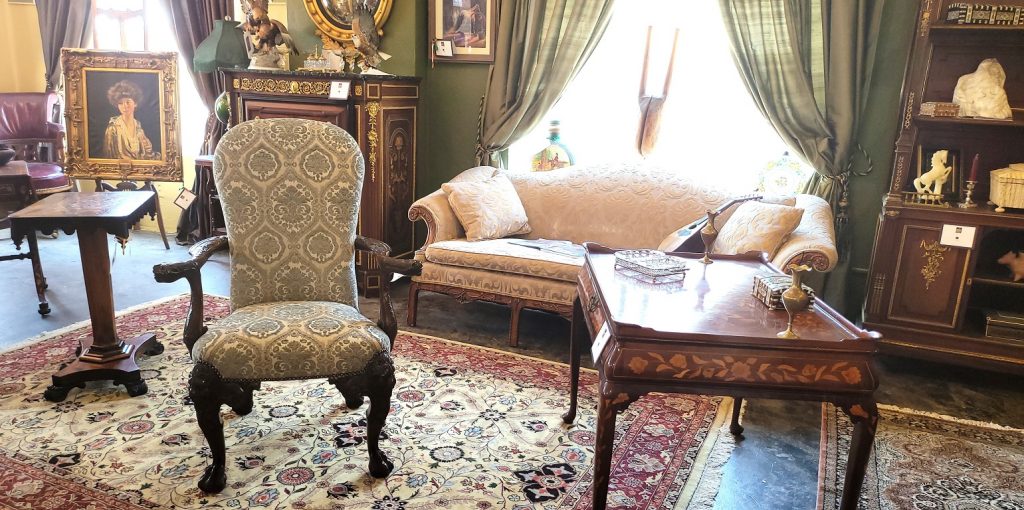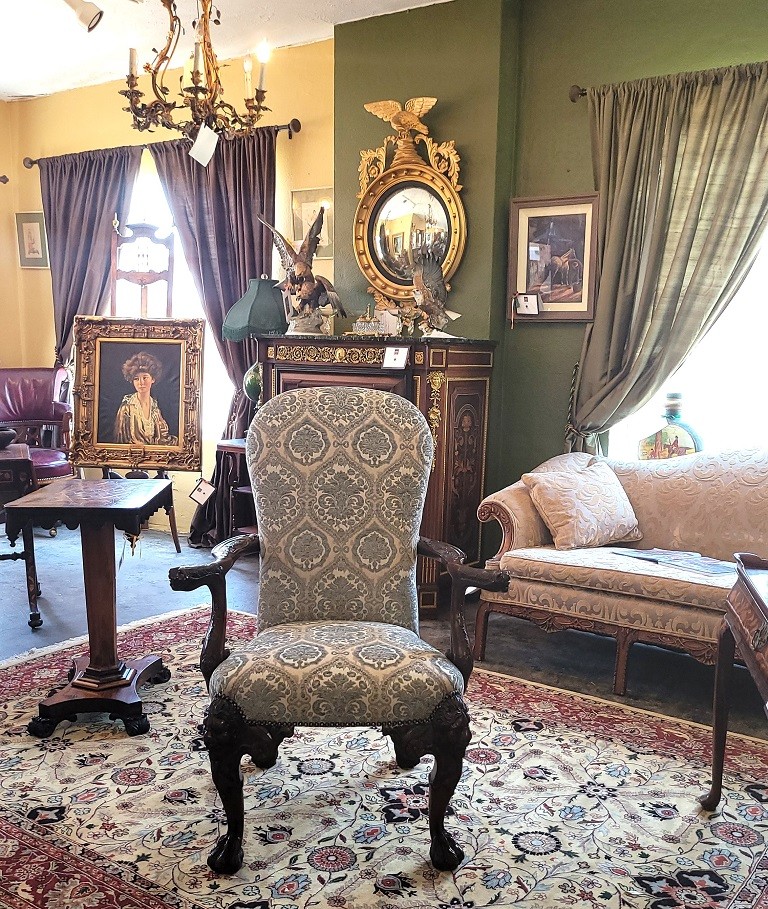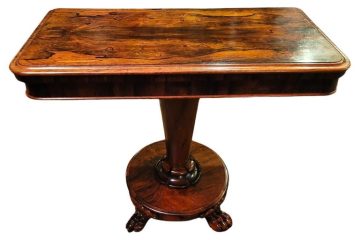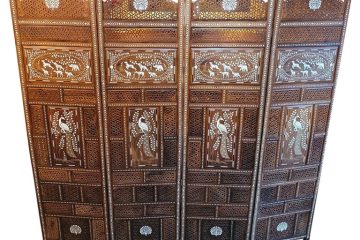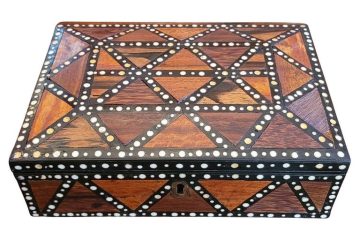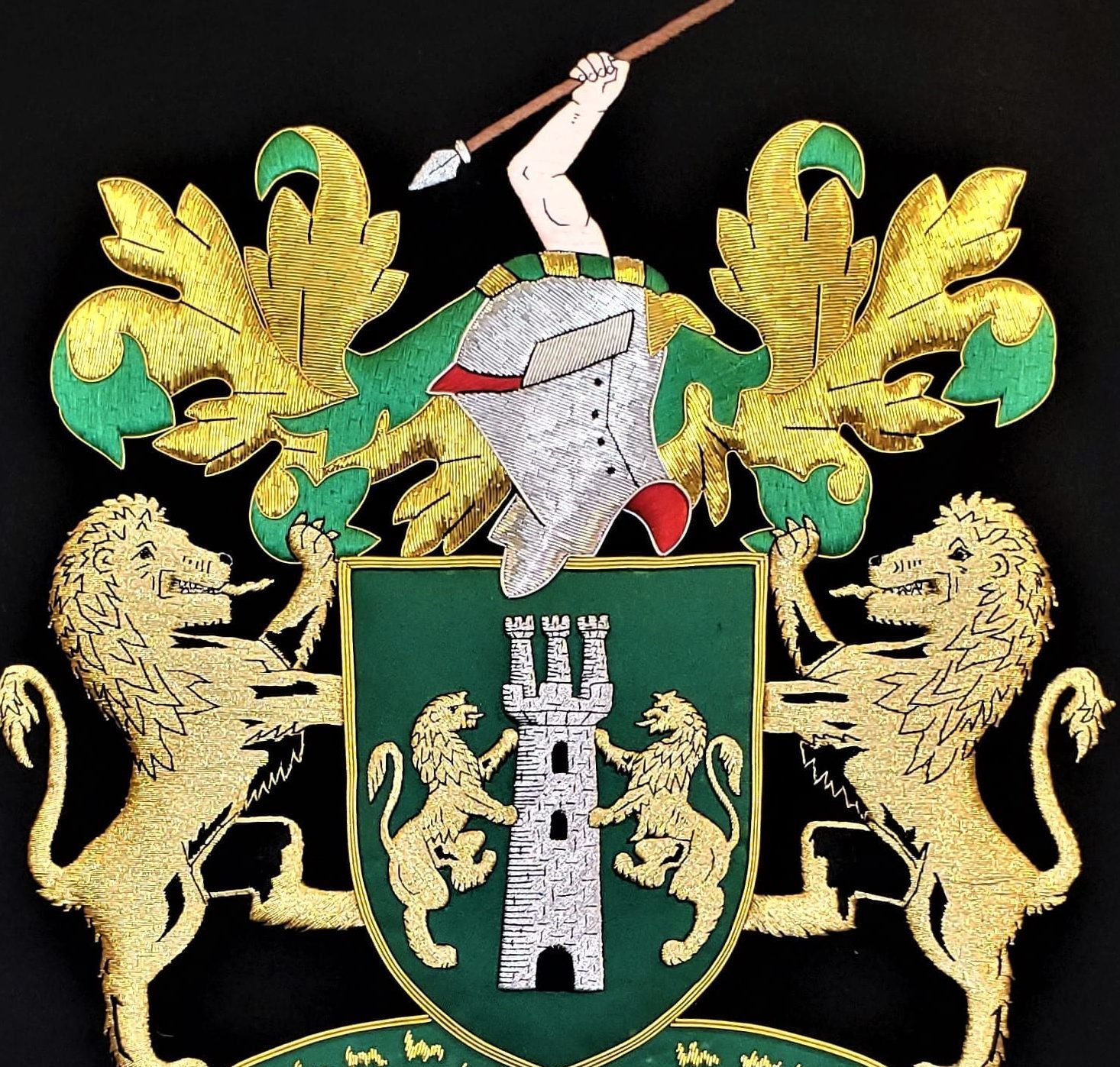PRESENTING A STUNNING and OUTSTANDING Irish Hand Carved Armchair with Lions Heads & Hairy Paw Feet.
Irish made circa 1890-1910.
We know that this is ‘Irish’, due to the signature ‘hairy paw’ feet which is synonymous with Irish Georgian furniture.
We are of the opinion that this is ‘Georgian Style’ and made right at the end of the 19th Century and possibly very early 20th Century.
This is a hand crafted chair, made of mahogany, and has THE MOST FABULOUS Lions Head carvings on the knees of both front legs, Lions Heads on the ends of the serpentine shaped arm supports.
THE DETAIL OF THE CARVING ON EVERY PIECE OF THIS CHAIR IS SIMPLY OUTSTANDING !
Both arm supports have detailed carving along their body in floral and ribbon motifs with the ribbon carving ending in Celtic ‘Eternity’ symbols and floral tassels.
The side supports are likewise carved with floral and ribbon motifs ending in floral tassels.
Each arm ends with a fabulously carved hairy headed lion with his face pointing outward. Their eyes, snout and smiling mouths expertly carved.
The front legs have the AMAZING lions head carvings (obviously male lions) with their flowing manes. They are set between floral carvings and a flower medallion either side of each head.
The legs then curve down to the most AMAZING carved large ‘hairy’ lions paw feet. Large because the Lions are males. The hairy and carved detail to the feet is all around the feet (360 degrees). The maker even made/carved toenails on the base of the feet.
The rear feet have gorgeous acanthus foliage style carvings on the knees and curve outwards to the AGAIN, carved large ‘hairy’ lions paw feet. Large because the Lions are males. The hairy and carved detail to the feet is all around the feet (360 degrees).
The chair has been re-upholstered, by us, in a gorgeous light gold, sage green and cream (very Irish colors), silk and wool, damask fabric which is beautifully sympathetic to the style and period. The upholstery is entirely edged in brass upholstery round headed pins.
We are confident that this chair is ‘antique’, for a number of reasons: (1) It is hand crafted and constructed, (2) the color/patina and natural wear and tear are what you would expect with natural aging from circa 1890-1910, (3) we have never seen another one like it, so they were most definitely, not, mass produced.
Unsigned and unmarked but undoubtedly made by a top Irish furniture maker and probably in Dublin.
It is MOST DEFINITELY of the quality of furniture that was being made by the renowned, James Hicks of Pembroke Street, Dublin at that time.
RARE, QUALITY, EXCEPTIONALLY IRISH ANTIQUE!
Irish furniture can be recognised by certain features, which differentiate it from its European counterparts. The Irish style of furniture is said to have been lagging behind in fashion compared to English equivalent by a number of years, in both its design and manner by which the furniture was manufactured. A defining feature of the mid-eighteenth-century furniture is the carving on different parts of the furniture such as the aprons, blanket chests, bottle-stands and such objects. The carvings included foliated details, baskets of flowers and scallop shells, which are some of the most prominent carvings that are represented on Irish furniture at this time. A few of the Irish makers of these objects were James Hicks, Arthur Jones, William Moore, Mack & Gibton and Robert Strahan. All though individuals would have been the most prominent at the time of the 18th century and early 19th century but there are any other cabinet makers as well.
Not all Irish furniture was detailed with such wonderful carvings and some might have been seen to be rather plain. One of the most identifiable items that are described as plain is the Irish Hunt Table, its simple elegance comprising of with straight plain legs. It was most commonly used in the dining room of a rural house such as a agents house or large house of a land holder. Another very popular and simply designed piece was the Irish Silver table, its design is very elegant and yet individual partially owing to the shell motive.
Other examples of such Irish tables are side tables which have a distinctive double scrolled leg. Usually legs are carved with acanthus and have paw feet which are quite popular in Ireland but more rare in England. Other features are the inside leg which is carved with elongated C-scroll. The triple scroll on the leg was common place. Some cabinet makers and creativity was really captured with their side tables in how the carving was done. This carving may include Jupiters eagle or Lion mask and flanked Swags of flowers. In other furniture such as chairs, the H-shaped serpentine stretcher was popular in the 18th century in Ireland and when English chairs had moved forward in their design the Irish makers were still using the H-shaped serpentine. There was certainly an overlap between Irish and English furniture, one can see that Irish cabinet makers used English pattern books but used Irish features such as the carvings as the shell, baskets of flowers and foliated details. Another unique feature in Irish cabinet making was Killarney ware, its Arbutus wood unique to Killarney County Kerry and how the inlay was designed was unique in the mid 19th century period and in Irish cabinet making. These creations made the Irish furniture unique throughout the 18th, 19th and early 20th century.
Irish Hand Carved Armchair with Lions Heads & Hairy Paw Feet
Provenance: From an Irish American Estate in Virginia.
Condition: Very Good original condition. Newly Re-upholstered.
Dimensions: The Chair is 44 inches Tall, 25 inches Deep and 32.25 inches Wide
Seat Height is 21 inches
Seat Cushion is 24 inches wide at front.
Depth of seat Cushion is 18 inches
SOLD
